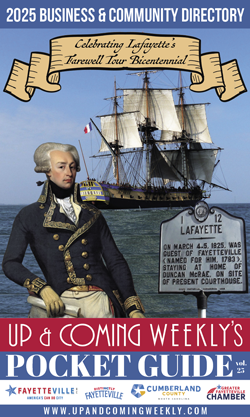
The renaming of Fort Bragg comes after the U.S. Congress voted to mandate that Fort Bragg and eight other military installations named after Confederate figures or sympathizers be renamed. Fort Bragg was named after Confederate General Braxton Bragg.
Fort Bragg's leadership has held several town halls on and off-post to receive input from servicemembers and local citizens about the renaming process.
The Naming Commission said it received more than 34,000 submissions for new names and narrowed it down to 87 names. Some of those names do have connections to Fort Bragg and were some of the suggestions received by Fort Bragg's leadership. The commission does state that while a final selection for each post is still pending, the scope of consideration is now focused on these names:
- Sgt. 1st Class William Bryant, a 5th Special Forces Group soldier who received a Medal of Honor after being killed in Vietnam in 1969.
Master Sergeant Raul Perez "Roy" Benavidez, a 5th Special Forces Group soldier who received the Medal of Honor for a series of brave actions during the Vietnam War in 1968. - Lt. General James Gavin was the third Commanding General of the 82nd Airborne Division during World War II. He was nicknamed "The Jumping General" because he practiced taking part in combat jumps with the paratroopers under his command.
- Master Sgt. Gary Gordon and Sgt. First Class Randy Shughart was posthumously awarded the Medal of Honor for their actions during the Battle of Mogadishu in October 1993. Gordon and Shughart were stationed at Fort Bragg before being deployed to Somalia. Gordon Elementary School in Linden Oaks, Harnett County, was named in Gordon's honor.
- Capt. Kimberly Hampton was the first female military pilot in United States history to be shot down and killed as a result of hostile fire. She was assigned to the 82nd Airborne Division at Fort Bragg before becoming the commander of Delta Troop, 1st Squadron, 17th Cavalry Regiment prior to the unit's deployment to Iraq in 2003. Hampton was posthumously awarded the Bronze Star, Air Medal, and Purple Heart.
- Sgt. 1st Class Lawrence Joel of the 1st Battalion 503rd Infantry Regiment, 173rd Airborne Brigade was awarded the Silver Star and Medal of Honor for his actions in South Vietnam aiding his fellow Soldiers during an ambush by a Viet Kong battalion. Fort Bragg's Lawrence Joel Health and Dental Clinic is named after him.
- Lieutenant General (Ret.) Hal Moore and his wife Julia Moore helped prompt the U.S. Army to set up survivor support networks and casualty notification teams consisting of uniformed officers, which are still in use. The two were married at Fort Bragg while Hal Moore was assigned to the 82nd Airborne Division. Throughout his career, he became a jumpmaster with over 300 jumps. He was awarded the Distinguished Service Cross for extraordinary heroism at the Battle Ia Drang during the Vietnam War.
- Gen. Roscoe Robinson, Jr. was the first African-American commander of the 82nd Airborne Division and the first African-American officer to reach the rank of four-star general. Robinson served in the Korean War and received a Bronze Star for his actions in his early career.
- Gen. Matthew Ridgway fought with distinction during World War II while directly helping create the foundation of the first airborne corps.
- Cpl. Rodolfo Perez "Rudy" Hernandez received the Medal of Honor for conspicuous gallantry and intrepidity above the call of duty for his actions during the Korean War.
- Gen. Omar N. Bradley oversaw the U.S. military policymaking in the Korean War. The Bradley Fighting vehicles were named after Gen. Bradley and known as a key armored vehicle for the U.S. military.
One name missing that was popular with Fayetteville, and Fort Bragg locals were Brig. Gen. Edward S. Bragg, the cousin of Braxton Bragg. In the Civil War, Edward Bragg served in the Union Army and served four terms in the U.S. House of Representatives representing Wisconsin. Later, he was United States Minister to Mexico during the presidency of Grover Cleveland and consul-general to the Republic of Cuba and British Hong Kong under President Theodore Roosevelt.
The full list can be seen here.
The commission has until Oct. 1 to submit a name-change proposal to the House Armed Services Committee and Senate Armed Services Committee in response to the 2021 National Defense Authorization Act.
"It's important that the names we recommend for these installations appropriately reflect the courage, values and sacrifices of our diverse military men and women," retired Navy Adm. Michelle Howard said, the chair of The Naming Commission. "We also are considering the local and regional significance of names and their potential to inspire and motivate our service members."

 How to resolve AdBlock issue?
How to resolve AdBlock issue? 








